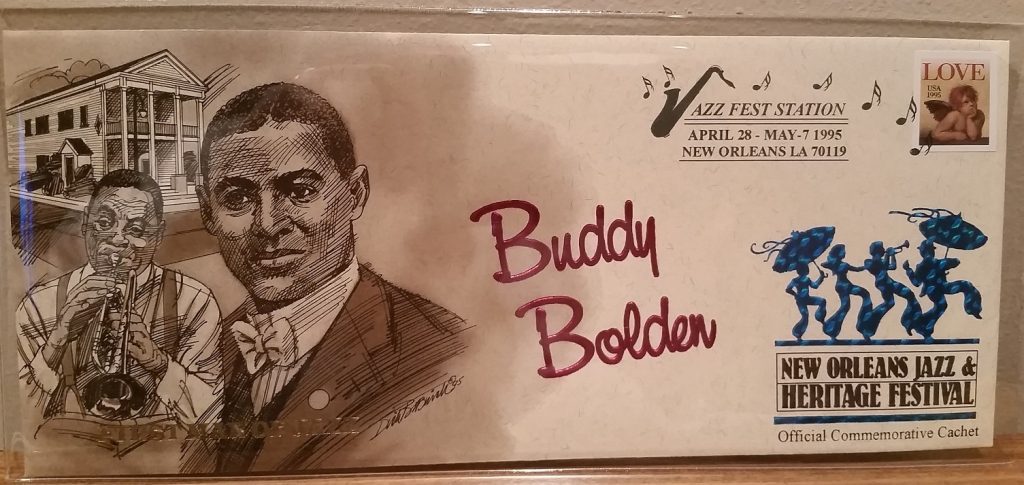Jazz Origins
Jazz is known as the pinnacle of African American music of the twentieth century, specifically known for its improvisation, virtuosity and creativity of its performers and composers, and its artistry and professionalism. Jazz was created from a culmination of jazz, ragtime, blues, marches, African American religious music, American popular song, musical theater, and European classical music. Jazz originated in New Orleans, Louisiana as a meeting of the uptown African American brass and string brass and string band tradition. During the late nineteenth century, genres consistently overlapped between ragtime, musical theater, and jazz. Ragtime is most associated with the piano compositions of Scott Joplin and coon songs that featured lyrics about Black Americans, which emerged from the thriving African American musical theater scene in New York. Pioneering composers of the mainstream American musical theater began to also compose ragtime songs. The Images of African Americans in ragtime song were prominently stereotypical and contributed to the debate of ragtime’s merits in the Black and mainstream American media communities.
The musical innovations of ragtime including syncopation, 16 bar march, and formal arrangements (AB or ABA followed by C or CD), also translated into early jazz music. These contributions created a foundation for early jazz music to form in New Orleans under the creative genius of Buddy Bolden.
Who Is Buddy Bolden?

Charles “Buddy” Bolden is a primary figure in New Orleans music and credited as one of the essential performers in the early years of jazz music. Bolden grew up in Central City, in a racially mixed neighborhood where he experienced brass bands playing through the streets of New Orleans during his childhood. Although records of his education are unknown, it is assumed that he attended the Fisk school and may have even graduated. At some point during his life he began to take lessons on the cornet (trumpet) which led him to playing in bands and becoming a working musician. The problem with Buddy Bolden’s legacy lies within his lack of music notation and struggles with alcohol abuse and mental health.
Sometime during the turn of the century, Buddy Bolden began to improvise passages from existing songs which received high praises from his audiences. Soon people would come from across the city just to hear Buddy Bolden and his band play. Buddy Bolden’s band included the clarinet, cornet, trombone, bass, guitar, and drums of which its ensemble played a role in establishing the instrumentation for jazz ensembles. Bolden and his band’s repertoire included New Orleans standards such as “Nearer My God to Thee” and “Didn’t He Ramble”, however their claim to fame was with performances with suggestive/raunchy vocals like “Make Me a Pallet on the Floor”.

What Happened to Buddy Bolden?
Copious amounts of the Bolden legend comes from oral accounts passed down decades after his death. There are varying stories of his various occupations and performances as a musician. One thing that remains true is that Bolden began to have acute mental problems when his family moved away from him. He was arrested in 1906 for the first time because in a fit of psychosis, he became convinced that he was being drugged or poised and attacked his caregiver after being bedridden for several weeks. He was classified as being insane and alcohol abuse was the cause. From this incident Buddy Bolden’s career and life continued to go downhill. As time progressed, Bolden’s insanity grew which deteriorated his relationship with his band because he became erratic and unreliable until he finally had to quit playing. His last public performance was during a parade on Labor Day in 1906, but he dropped out before the parade continued.

After his final performance, Buddy Bolden was arrested twice more in 1907 and later committed to an insane asylum known as the State Insane Asylum in Jackson, Louisiana, where he spent the rest of his life. Due to his lack of music notation and intense downward spiral at the height of his career, Bolden’s songs were never notated and his legacy lived on in the people who witnessed Bolden and his band perform. Unfortunately, the landmarks where early jazz music flourished like Union Sons Hall were also torn down and destroyed to make way for government buildings. From 1907-1917, jazz bands like Bolden’s toured around the United States playing the early jazz styles trademarked by Buddy Bolden with the first jazz record being released in 1918. As Bolden’s mental state continued to regress, jazz music of a similar style was being developed in Chicago by Joe “King” Oliver. However, the band led by Bolden is contributed with being the first jazz band, setting the precedence for New Orleans jazz featuring an improvisatory style, blues feeling of uptown Black New Orleans, and rhythmic interpretations. These features transformed the basic march beat into the slow drag and up-tempo strut that are the two basic distinctions of New Orleans jazz style. Buddy Bolden’s life may never be known to its fullest extent but one thing is true, there is no jazz music without Buddy Bolden.


